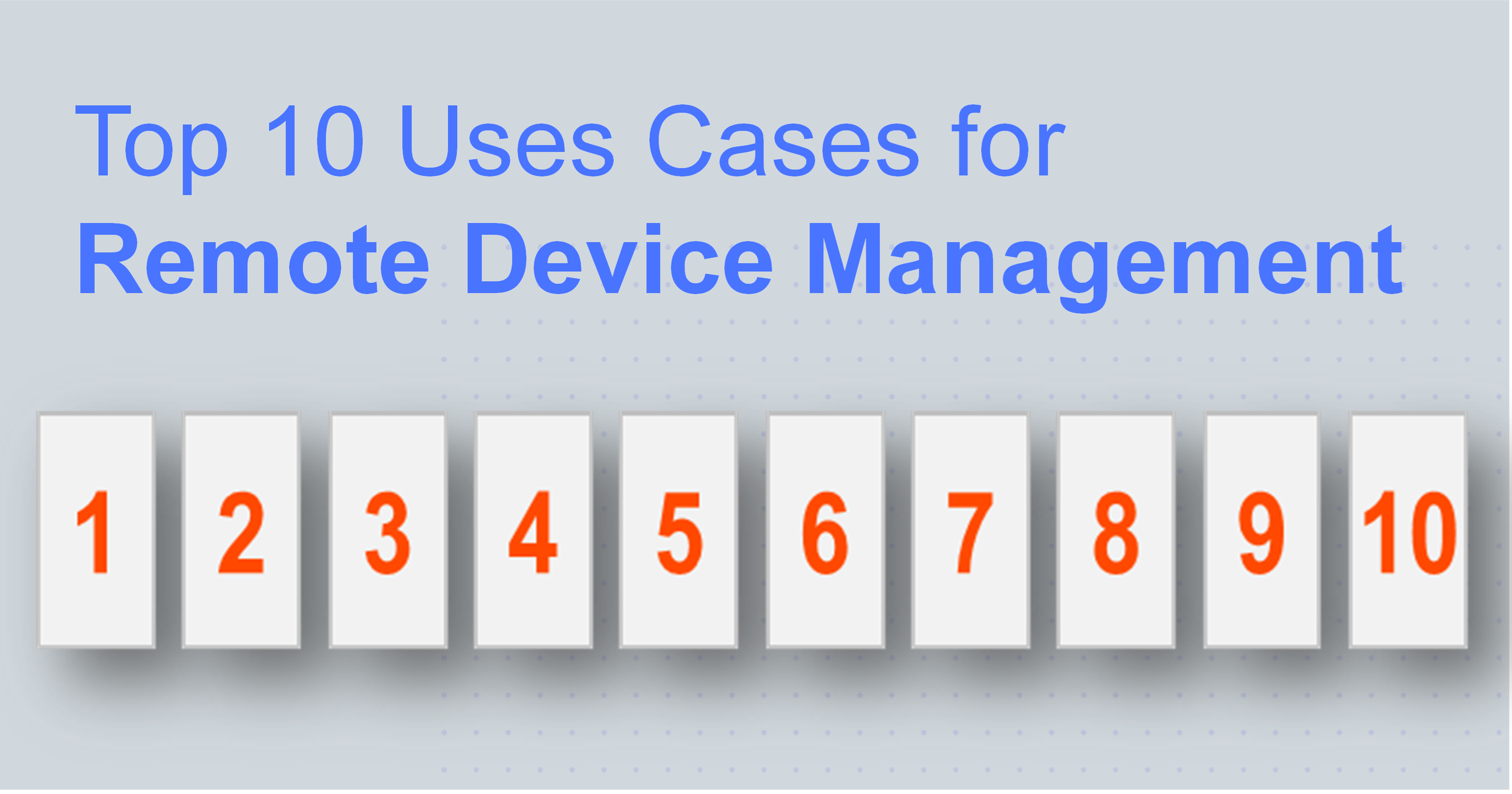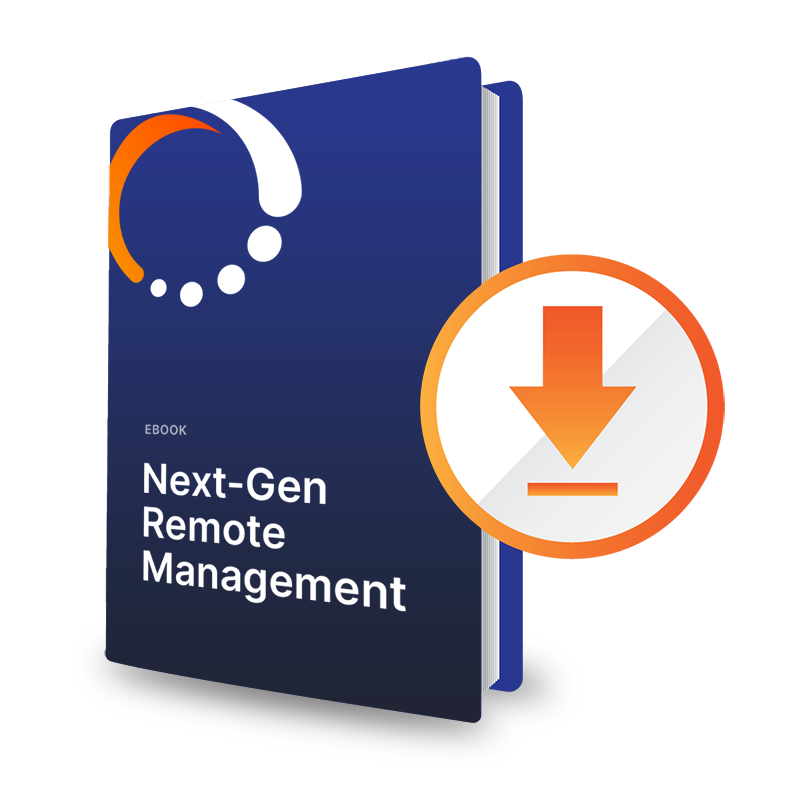10 Essential Use Cases for Remote Device Management Software
Remote Device Management (RDM) Software has many different use cases in helping technical support and NOC teams maintain and support devices from afar.

Overview of the Top 10 Use Cases:
Remote Device Management (RDM) software is a critical tool for Network Operation Centers (NOCs), Technical Support Teams, and IT Departments, providing a comprehensive solution for managing a wide range of devices. Here's an expanded look into the 10 essential use cases for RDM software, emphasizing its role in enhancing security, automation, and centralized control.
- Centralized Device Management: RDM software serves as a central hub for managing diverse devices, including laptops, smartphones, iPads, and iPhones, streamlining device management processes and reducing complexity
- Real-Time Remote Monitoring: NOCs and Technical Support Teams can leverage RDM software for real-time remote monitoring of device performance and status across various operating systems, such as Windows, macOS, Android, iOS, and Linux. This capability ensures quick identification and resolution of issues, maintaining continuous uptime and reducing downtime.
- Automated Troubleshooting: With automated troubleshooting functionalities, RDM software enables teams to swiftly address common device issues, minimizing manual intervention and enhancing operational efficiency.
- Enhanced Endpoint Management: Secure and efficient endpoint management is vital for cybersecurity. RDM software provides robust endpoint management tools for laptops, smartphones, and other endpoints, ensuring they are updated, secure, and operating optimally.
- Remote Access and Control: RDM software allows teams to remotely access and control devices, facilitating maintenance, updates, and configuration changes. This remote control capability enhances operational flexibility and reduces the need for physical presence.
- Comprehensive Mobile Device Management (MDM): RDM software offers comprehensive MDM capabilities for managing mobile devices, including smartphones, tablets, iPads, and iPhones, ensuring they are securely managed and compliant with organizational policies.
- Centralized Visibility from a Central Location: RDM software provides a single pane of glass view, offering centralized visibility into the entire device fleet. This central location enables teams to monitor and manage all devices efficiently.
- Vendor and Tool Consolidation: By consolidating multiple management tools into a single RDM solution, teams can reduce the complexity of managing diverse devices and systems. This vendor consolidation improves efficiency and reduces operational costs.
- Automation for Enhanced Efficiency: RDM software's automation capabilities enable teams to automate routine tasks and responses to common issues. Leveraging automation for smart alerts/notifications and automated remote resolve drives operational efficiency and frees up time for more critical tasks.
- Advanced Reporting and Analytics: RDM software provides advanced reporting and analytics tools, allowing teams to proactively identify trends, optimize device performance, and demonstrate the return on investment.
Additional Key Features:
- Software Patch Management: RDM software facilitates software patch management for operating systems, firmware, and proprietary software running on devices, including Windows devices, macOS, Android devices, and iOS devices.
- Remote Support: Technical Support Teams can provide remote support to end users, addressing issues quickly and efficiently, regardless of the device's location.
- Security Features: RDM software includes robust security features, such as authentication, device control, and integration with Active Directory, ensuring that devices are protected against cybersecurity threats.
- Lifecycle Management: RDM software supports the entire lifecycle of devices, from enrollment and provisioning to decommissioning, ensuring that devices are managed effectively throughout their lifecycle.
- Pricing and MSP Support: RDM solutions offer various pricing models to accommodate different budgets and needs, including support for Managed Service Providers (MSPs) managing multiple clients.
Conclusion:
Remote Device Management software is an essential tool for Network Operation Centers, Technical Support Teams, and IT Departments, providing the necessary capabilities to manage, monitor, and optimize a wide range of devices effectively. By leveraging RDM software, these teams can ensure the reliability, security, and efficiency of their device fleet.
FAQs:
- What is Remote Device Management (RDM) software? RDM software is a solution that enables remote monitoring, management, and control of various devices, ensuring their optimal performance and security. You can read more about RMD in our post here.
- How does RDM software improve device security? RDM software allows for the remote implementation of security policies, regular updates, and quick responses to potential threats, enhancing the overall security of the device fleet.
- Can RDM software manage devices across different platforms and vendors? Yes, RDM software is designed to manage devices across various platforms and vendors, providing a unified approach to device management.
- What is the significance of centralized visibility in RDM software for Network Operation Centers and Technical Support Teams? Centralized visibility allows these teams to monitor all devices from a single dashboard, enabling quick identification of issues and streamlined management of the device fleet. There are similar benefits for Engineering and Product teams responsible for maintaining and supporting devices as well.
- How does automation in RDM software benefit Network Operation Centers and Technical Support Teams? Automation capabilities in RDM software reduce the need for manual intervention, saving time and resources while ensuring consistent and efficient device management.













